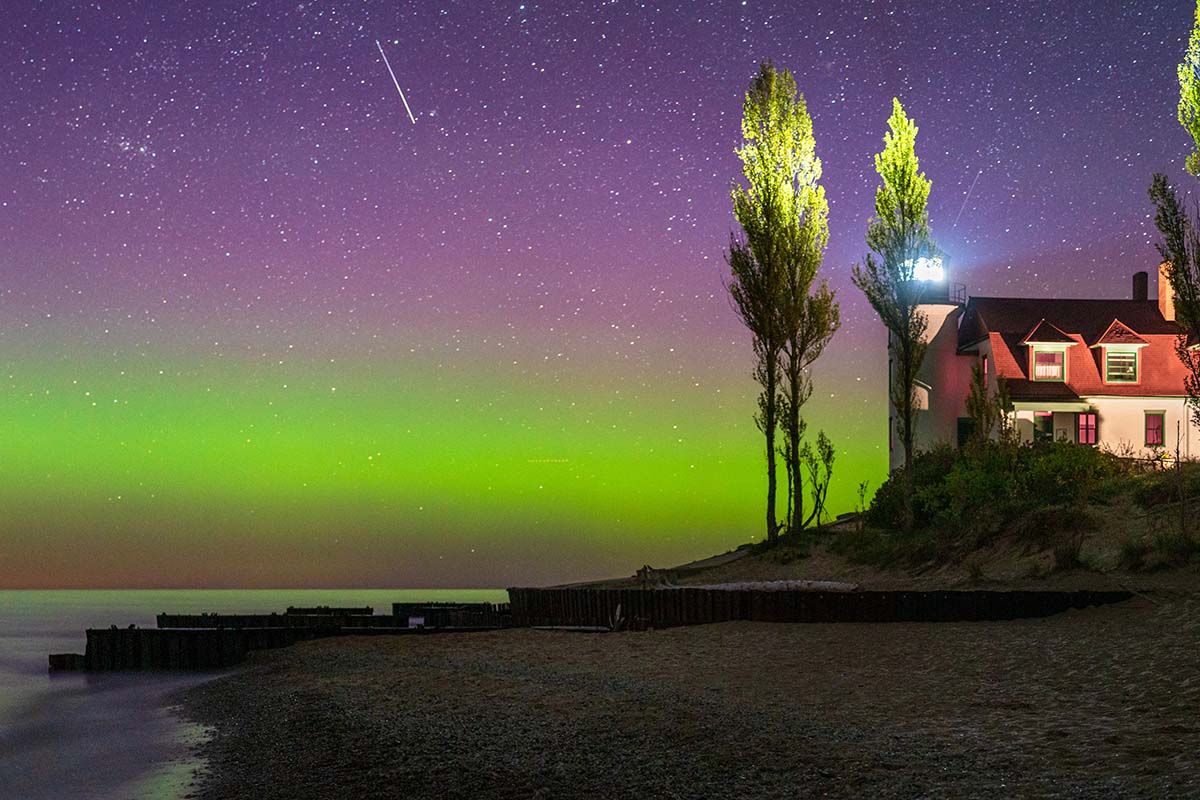From Familiar to Phenomenal
Nick Irwin taps into the versatility of his Tamron 28-75mm G2 and 28-200mm Di III RXD lenses to explore new landscapes and put a different spin on often-visited ones.
Share the article:
More Photo Tips | Video Gallery | Photo Gallery | Enewsletter sign-up
By Jenn Gidman
Images by Nick Irwin
Nick Irwin enjoys finding new places to explore with his camera, as well as revisiting some of his favorite stomping grounds near his home in Michigan. “It sometimes surprises me when photos I take of the places I’ve been to a million times do well on social media, because to me, I’ve seen those scenes before,” he says. “But I forget that people are often seeing these landscapes for the first time. Even so, I do make a concerted effort to switch things up and seek out different perspectives whenever I’m photographing a familiar (to me) place.”
That’s why Nick appreciates his Tamron 28-75mm F/2.8 G2 and 28-200mm Di III RXD zoom lenses, which offer him the flexibility to stay creative. “The 28-200 is probably the most versatile lens that I own,” he says. “You have so much variety in terms of focal lengths right at your fingertips, all in one lens. And the image quality is extremely crisp and sharp, which is very important for the type of photography I do. Meanwhile, the 28-75 G2 has the extremely fast focusing I need, as well as that F/2.8 aperture for when I’m shooting sunsets or at twilight.”
Read on to see how Nick has used these two lenses in his more recent wanderings through nature.
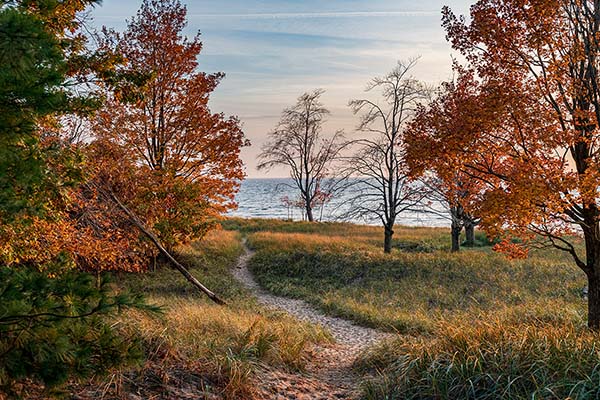
28-75mm (40mm), F/5, 1/60 sec., ISO 100
Click image to view larger
The first time I used the 28-75mm lens was in Kruse Park, in Muskegon, Michigan. What you’re seeing here is a path through the dunes that overlook Lake Michigan. What I like about this photo is that it feels like you’re walking along the path with me, which I achieve by aiming a bit low. By controlling where you place your focus, it adds depth to the image. You can see firsthand the stellar image quality of this lens in the leaves on the trees and blades of grass. This photo also made me realize how the positioning of the sun can totally change the look of an image. I took this photo in November, when the sun was much further south. But I’ve been there at other times of the year, and this scene looked very different.
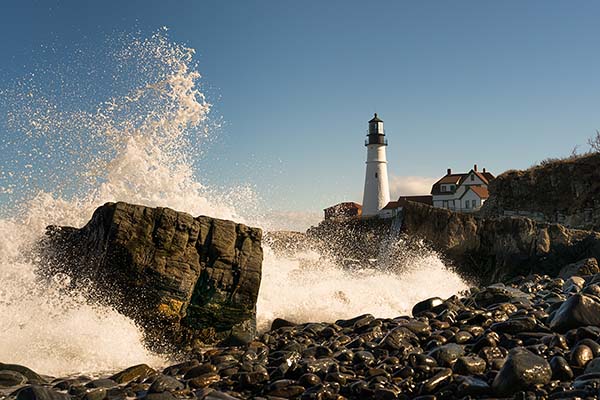
28-75mm (40mm), F/5.6, 1/1600 sec., ISO 100
Click image to view larger
We were visiting with a friend in Portland, Maine, in February, which isn’t a time when a lot of people visit Maine. It was about 25 degrees out that day. I wasn’t quite sure at first what to do with this scene photographically, since the skies were cloudless. It didn’t look interesting initially. Then I noticed the waves crashing against that rock. To get this image, I had to stand there, quickly take the shot, then run back so I wouldn’t get hit by the water myself. I chose to use the 28-75 G2 for this shot, because I needed to be able to focus fast, so every little drop of water would be sharp and clean. I was also captivated by the black rocks in the foreground.
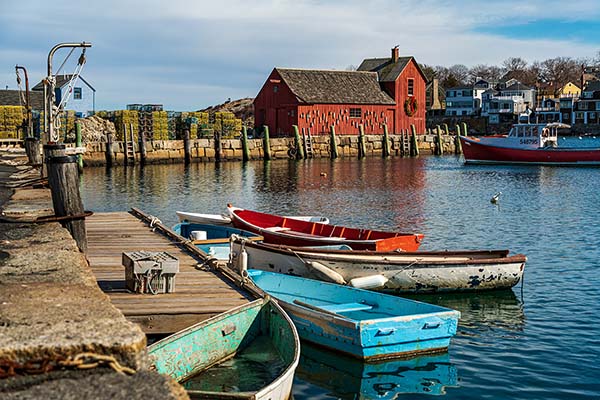
28-200mm (55mm), F/6.3, 1/640 sec., ISO 100
Click image to view larger
As we were driving back from that trip to Maine, my girlfriend wanted to stop in Rockport, Massachusetts. There’s such a nostalgic feel in this seaside town, and I’m a sucker for reflections, so these colorful rowboats stood out to me. I wanted to get that red building into the photo but still have the boats as the main focal point—which is also why I let the foreground fall slightly out of focus. It gives you an almost 3D effect. The day was really cold, as it had been near the lighthouse, but it was worth it to be there in the winter, because there were no people around as distracting elements in the photo.
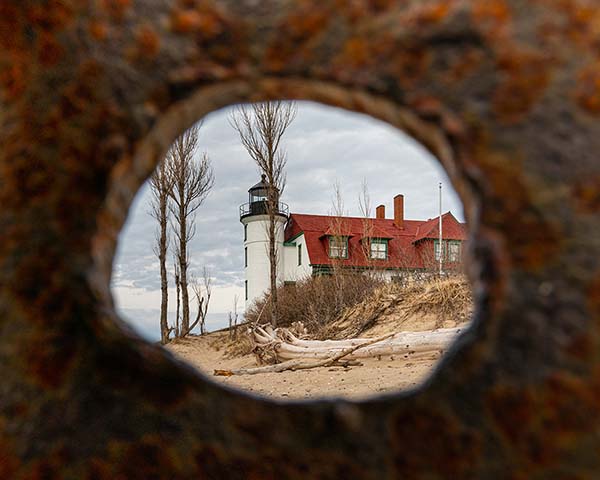
28-75mm (28mm), F/22, 1/60 sec., ISO 100
Click image to view larger
The Point Betsie Lighthouse is located along the shoreline of Lake Michigan, not far from Frankfort. I make a point to stop by whenever I’m in the area, so I’m always looking for a different way to photograph it. There are sea walls there to protect against the waves, and this time around I spotted a hole in one of the walls. I figured this would be a neat way to frame the lighthouse. I had to use center focus, since I was shooting pretty close to the hole and wanted the lighthouse in focus. I shot it at F/22 so that the rusted steel around the hole would be a little more visible; if I’d shot it at F/2.8 or F/5.6, all you would’ve seen was a blur of brown and red.
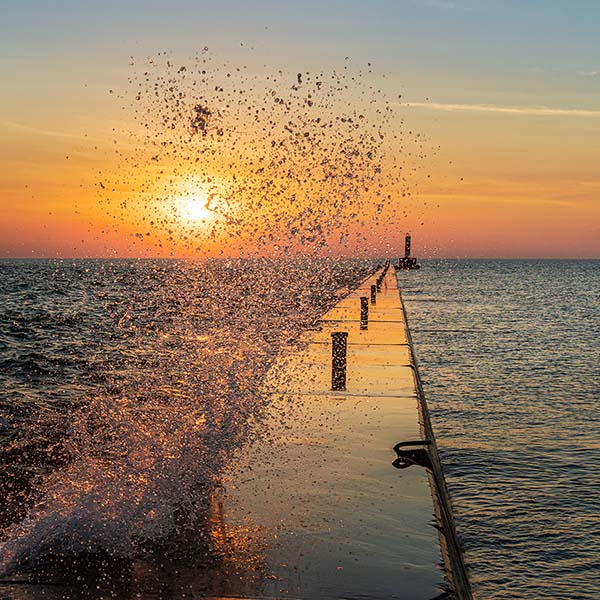
28-200mm (34mm), F/6.3, 1/1600 sec., ISO 500
Click image to view larger
This breakwater photo was taken in Elberta, Michigan. I loved the reflections coming off the top of the cement, and, once again, the water splashing against the structure and into the air. The water there is so pretty, almost a Listerine green. What made this splash extra-special is that, because it was sunset, the light hitting the water made it look like glitter. The image quality of the 28-200 lens allowed me to really showcase those droplets.
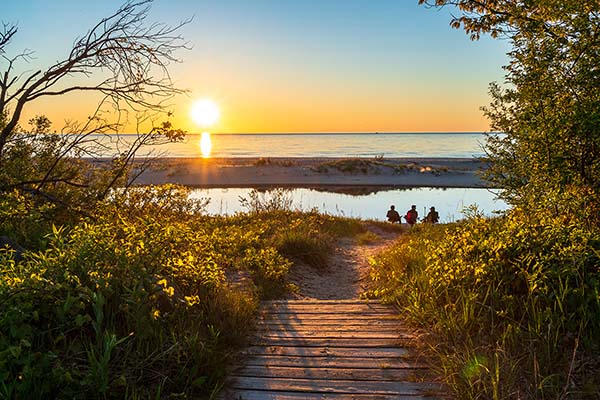
28-200mm (35mm), F/16, 1/200 sec., ISO 500
Click image to view larger
This photo along the Platte River, in Sleeping Bear Dunes National Lakeshore, is to me one of those pure Michigan moments. We were walking back to the car and saw these three guys almost silhouetted down near the water, waiting for the sun to set. I wanted to use the 28-200 to achieve more compression in the image. I don’t typically include people in my photos, but sometimes it works, and this was one of those times. This feels to me like a possible picture to use in one of my calendars.
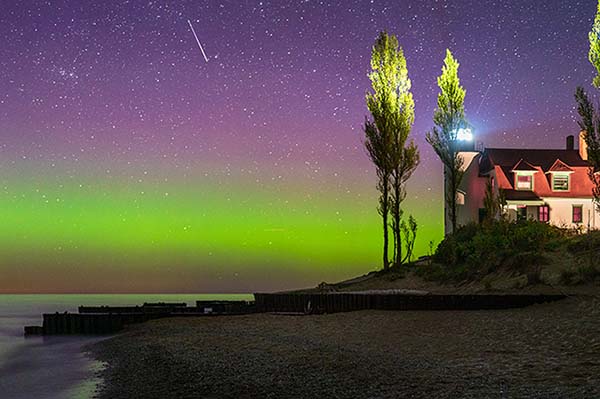
28-75mm (47mm), F/2.8, 15 sec., ISO 2500
Click image to view larger
This photo was taken just a few hours after the previous one at Point Betsie. The northern lights is one of my favorite things to shoot, but I’ve realized that it’s hard to guarantee you’re going to see them, so I never let my expectations rise too high—that way, it makes it super-rewarding when the aurora does emerge. I’d never seen them at Point Betsie until this particular night. The light you see hitting the building and the trees is from a flagpole off to the right. I ended up cropping it out of the image because I wanted the photo to focus on the northern lights and that shooting star that also happened to streak across the sky. I lucked out on both counts.
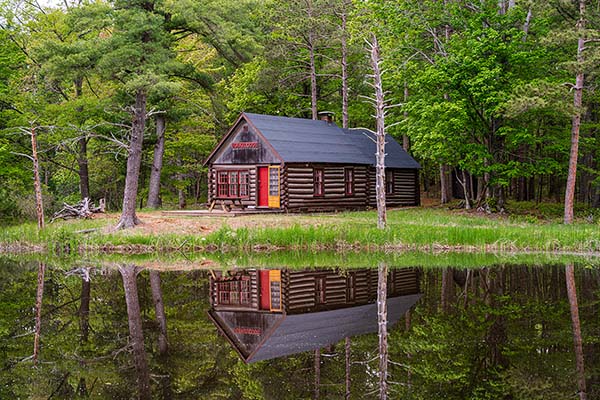
28-200mm (55mm), F/7.1, 1/60 sec., ISO 320
Click image to view larger
We spent Memorial Day weekend at Sleeping Bear Dunes, near the historic Boekeloo Cabin, used as a homestead by the Cooper family in the 1930s. I’d actually tried to get some photos of this cabin last year, but when I went they were doing repairs, so there was scaffolding all around it. When we first got to the cabin this time, I shut that yellow outside door and was going to take the picture that way, but then some people came and were walking around in front of the cabin, so we left for a little while. When we came back, I realized I kind of liked the contrast of the two doors, with the yellow and the red, so I left them as is and took the photo. I did what I always do with these kinds of shots and made sure I could get the trees and grass as crisp and sharp as possible.
To see more of Nick Irwin’s work, go to www.nickirwinimages.com or check out his Facebook and Instagram pages.
More Photo Tips | Watch Videos | Learn More About Tamron Lenses | Photo Gallery
